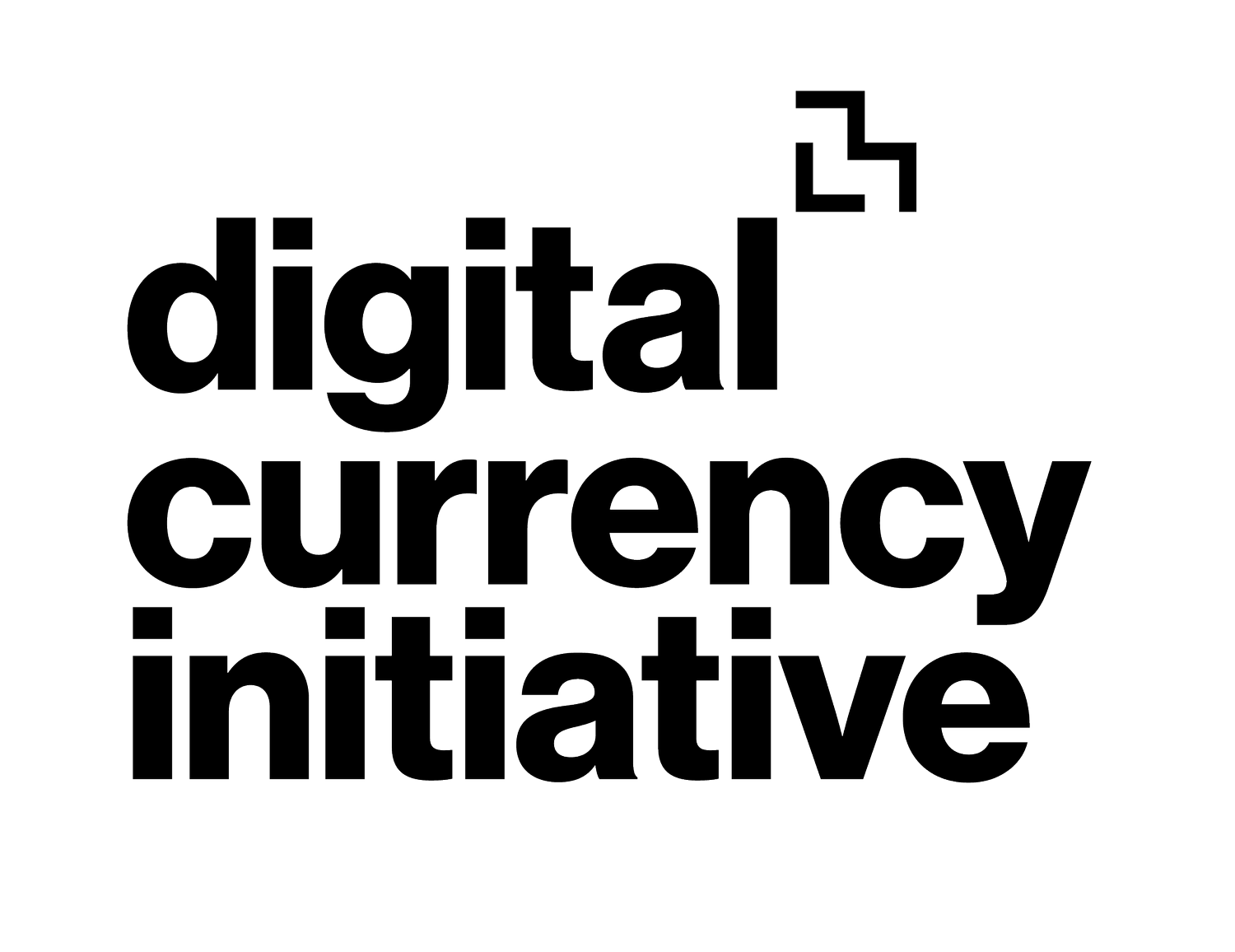
Bitcoin Magazine Netherlands Podcast: Gert-Jaap Glasbergen was interviewed on the new security project "Pool Detective"
Gert-Jaap was interviewed by Bitcoin Magazine NL about the new security project “Pool Detective”. Listen to the full podcast to learn more. Podcast is in Dutch.

Digital Currency Initiative's Livestream Series - Episode 2: Proof-of-Work
Director Neha, Software Developer Gert-Jaap, Phd student Daniel M. (Harvard) and recent MIT DCI MEng Graduate James discuss Proof-of-Work; and the Digital Currency Initiative’s recent projects around Proof-of-Work. Including Monitoring Pool Mining (Gert-Jaap), Double Spend Attacks (Daniel M. and Neha) and 51% Attacks (James).

Digital Currency Initiative's First Livestream in Upcoming Series
Here is the first livestream in a new series from the Digital Currency Initiative. During this episode, meet some of our team and find out more about the DCI and what we do.
A Lower Bound for Byzantine Agreement and Consensus for Adaptive Adversaries using VDFs
Abstract:
Large scale cryptocurrencies require the participation of millions of participants and support economic activity of billions of dollars, which has led to new lines of work in binary Byzantine Agreement (BBA) and consensus. The new work aims to achieve communication-efficiency---given such a large n, not everyone can speak during the protocol. Several protocols have achieved consensus with communication-efficiency, even under an adaptive adversary, but they require additional strong assumptions---proof-of-work, memory-erasure, etc. All of these protocols use multicast: every honest replica multicasts messages to all other replicas. Under this model, we provide a new communication-efficient consensus protocol using Verifiable Delay Functions (VDFs) that is secure against adaptive adversaries and does not require the same strong assumptions present in other protocols.

Reorgs on Bitcoin Gold: Counterattacks in the wild - Medium Post by James Lovejoy
The economic security of Bitcoin and other proof-of-work cryptocurrencies relies on how expensive it is to rewrite the blockchain. If a 51% attack were economically feasible, an attacker could send a transaction to a victim, launch the attack, and then double spend the same coins back to themselves. Satoshi Nakamoto assumed that this would not occur because a majority of miners would find it more lucrative to honestly follow the protocol than to attack the chain, the source of their own mining revenues.

"What actually happens during a bitcoin halving? Technically speaking, not much", The Block Interviews DCI's Tadge Dryja
Quick Take
Bitcoin’s third-ever block halving is set to take place next month
But from a network perspective, what exactly happens?
The cryptocurrency world is abuzz with speculation about the potential impact of next month's bitcoin halving, when for the third time in the network's history, the reward for mining a block will be divided by two.
ClockWork: An Exchange Protocol for Proofs of Non Front-Running by DCI Co-op Dan Cline with Tadge Dryja and Neha Narula of the DCI
Abstract:
Exchanges are critical for providing liquidity and price transparency to markets, but electronic exchanges sometimes front run their users: because the exchange is in a privileged position, it can observe incoming orders and insert its own orders or alter execution to profit, if undetected, risk-free. There are cryptographic schemes to address front-running, but they either require an assumption of non-collusion or do not definitively prevent it, and none can provide the exchange with useful evidence of good behavior: a transcript the exchange can show to an offline entity, like a potential new customer or a regulator, to prove that it is not front running.

MIT Technology Review Discusses Central Bank Panel from MIT Bitcoin Expo, which included DCI's Rob Ali
For central bankers, the game changed last summer when Facebook unveiled its proposal for Libra. Many have responded by seriously exploring whether and how they should issue their own digital money.
A Working Group's Paper: 'A Model for Genetic Data Exchange and Sovereignty' by the BCG Healthcare Applications Working Group (2018-2019)
Member Company: Boston Consulting Group (BCG)
Project Group: Healthcare Applications
Executive Summary
Over the past decade, significant breakthroughs in DNA sequencing have accelerated our capacity for genetic research and created new disciplines of precision medicine, promising a generation of novel therapies for previously incurable ailments. However, with an influx of vast amounts of genetic data, another challenge arose: the problem of data stewardship and governance. As of today, an individual who has their DNA analyzed through consumer-focused products like 23andMe or Ancestry.com, or through their personal healthcare provider has no promise of knowing where the genetic data goes or how it will be used. This historical lack of transparency has had cascading consequences across the industry- from disincentivizing participation in programs that would benefit from sharing genetic or health data, to driving a profound lack of genetic diversity in clinical trials. We believe that a blockchain tool, leveraging non-fungible tokens, can enable a degree of transparency and traceability to allow individuals to become informed stewards of their own genetic data. By doing so, we strive to build guardrails for privacy and security around the exchange of genetic data, thereby regaining the trust of participants, and encouraging our community to drive a thriving genetic data marketplace for the greater good of society.

DCI's Neha Narula Discusses CBDC in WSJ's 'Does the U.S. Need a National Digital Currency?'
Proponents say payments with a digital dollar would be faster and easier. Opponents say it would be costly and inefficient.
The nature of money is changing, and central banks around the world are debating whether they need to change with it.

TokenSpace: A Conceptual Framework for Cryptographic Asset Taxonomies by DCI's Dr. Wassim Z. Alsindi
Abstract
This work addresses the ongoing lack of legal clarity and inconsistent pronouncements regard- ing the regulatory status of cryptographic assets by introducing a novel series of classification approaches employing non-binary scoring systems. Novel taxonomies have been constructed based upon multi-level categorical and numerical discrimination methods following design science of information systems best practices. The aim is to provide greater explanatory insight with respect to the nuanced and complex ensemble of attributes which may be exhibited within this sui generis type of objects. The notions of Secu- rityness (S), Moneyness (M) and Commodityness (C) are proposed as candidate meta-characteristics for “TokenSpace”: a three-dimensional visual construction of subjective classification approaches towards a co- herent and customisable conceptual framework. TokenSpace can be used to make reasoned qualitative and / or quantitative comparisons of asset properties. TokenSpace has more in common with successful prior classification frameworks in other domains and greater development potential using axiomatic, empirical and qualitative approaches than the sorting, clustering, intuitive or na ̈ıve categorisation approaches pre- viously employed for cryptographic assets. TokenSpace provides a basis upon which real-time information feeds and predictive analytical tools may be developed in future.

Forbes's "Bitcoin Rival Suffers Devastating Attack" reviews DCI's James Lovejoy's discovery of a '51% Attack'
“Bitcoin gold, a relatively minor cryptocurrency that split off from the original bitcoin blockchain in late 2017, has suffered a so-called 51% attack resulting in over $72,000 worth of bitcoin gold tokens being double spent.
'MIT researchers identify security vulnerabilities in voting app' by MIT News discusses research by DCI's Neha Narula, Sunoo Park and DCI Advisor Ron Rivest
“In recent years, there has been a growing interest in using internet and mobile technology to increase access to the voting process. At the same time, computer security experts caution that paper ballots are the only secure means of voting.
Now, MIT researchers are raising another concern: They say they have uncovered security vulnerabilities in a mobile voting application that was used during the 2018 midterm elections in West Virginia. Their security analysis of the application, called Voatz, pinpoints a number of weaknesses, including the opportunity for hackers to alter, stop, or expose how an individual user has voted. Additionally, the researchers found that Voatz’s use of a third-party vendor for voter identification and verification poses potential privacy issues for users.”
'Aurora: Transparent Succinct Arguments for R1CS' by DCI's Madars Virza et al.
Abstract:
We design, implement, and evaluate a zero knowledge succinct non-interactive argument (SNARG) for Rank-1 Constraint Satisfaction (R1CS), a widely-deployed NP language undergoing standardization. Our SNARG has a transparent setup, is plausibly post-quantum secure, and uses lightweight cryptography. A proof attesting to the satisfiability of n constraints has size 𝑂(log2𝑛)O(log2n); it can be produced with 𝑂(𝑛log𝑛)O(nlogn) field operations and verified with O(n). At 128 bits of security, proofs are less than 250kB250kB even for several million constraints, more than 10×10× shorter than prior SNARGs with similar features.

'Blockchain and Money' course taught by DCI Advisor Gary Gensler is now available on MIT Open Courseware
“This course is for students wishing to explore blockchain technology's potential use—by entrepreneurs and incumbents—to change the world of money and finance. The course begins with a review of Bitcoin and an understanding of the commercial, technical, and public policy fundamentals of blockchain technology, distributed ledgers, and smart contracts. The class then continues on to current and potential blockchain applications in the financial sector.”
'Data Structures Meet Cryptography: 3SUM with Preprocessing' by DCI's Sunoo Park et al.
Abstract
This paper shows several connections between data structure problems and cryptography against preprocessing attacks. Our results span data structure upper bounds, cryptographic applications, and data structure lower bounds, as summarized next.

CNBC Interviews DCI's Neha Narula and reports on WEF Davos 2020 'Calls for a US ‘digital dollar’ rise as China powers ahead with a digital yuan’'
DCI’s Neha Narula was interviewed by CNBC whilst she was participating at the World Economic Forum in Davos. The article titled ‘Calls for a US ‘digital dollar’ rise as China powers ahead with a digital yuan’ and was published on Jan 23rd 2020.
